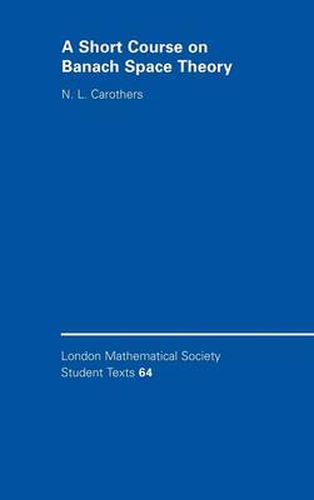Readings Newsletter
Become a Readings Member to make your shopping experience even easier.
Sign in or sign up for free!
You’re not far away from qualifying for FREE standard shipping within Australia
You’ve qualified for FREE standard shipping within Australia
The cart is loading…






This is a short course on Banach space theory with special emphasis on certain aspects of the classical theory. In particular, the course focuses on three major topics: The elementary theory of Schauder bases, an introduction to Lp spaces, and an introduction to C(K) spaces. While these topics can be traced back to Banach himself, our primary interest is in the postwar renaissance of Banach space theory brought about by James, Lindenstrauss, Mazur, Namioka, Pelczynski, and others. Their elegant and insightful results are useful in many contemporary research endeavors and deserve greater publicity. By way of prerequisites, the reader will need an elementary understanding of functional analysis and at least a passing familiarity with abstract measure theory. An introductory course in topology would also be helpful; however, the text includes a brief appendix on the topology needed for the course.
$9.00 standard shipping within Australia
FREE standard shipping within Australia for orders over $100.00
Express & International shipping calculated at checkout
This is a short course on Banach space theory with special emphasis on certain aspects of the classical theory. In particular, the course focuses on three major topics: The elementary theory of Schauder bases, an introduction to Lp spaces, and an introduction to C(K) spaces. While these topics can be traced back to Banach himself, our primary interest is in the postwar renaissance of Banach space theory brought about by James, Lindenstrauss, Mazur, Namioka, Pelczynski, and others. Their elegant and insightful results are useful in many contemporary research endeavors and deserve greater publicity. By way of prerequisites, the reader will need an elementary understanding of functional analysis and at least a passing familiarity with abstract measure theory. An introductory course in topology would also be helpful; however, the text includes a brief appendix on the topology needed for the course.